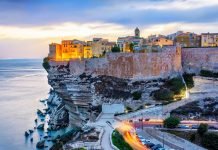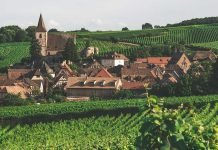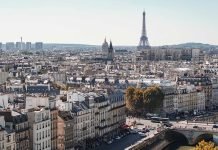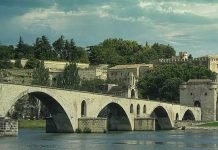Ajaccio, Corsica’s Capital: A Tale of Two Heritages
Ajaccio, the capital of Corsica, is a vibrant city that exists as both a modern hub and a rich historic centre. As the birthplace of Napoleon Bonaparte, the city has carefully preserved its history, with monuments, statues, and streets named in homage to its most famous son. A walk through the city’s old town reveals charming, narrow streets, pastel-hued buildings, and bustling squares where locals and tourists converge.
Fesch Museum
At the heart of Ajaccio, you will find the Palais Fesch, which houses the Musée Fesch. This is one of France’s most important collections of Italian art, second only to the Louvre. It was established by Cardinal Joseph Fesch, Napoleon’s uncle. The museum houses an extensive collection of Italian paintings from the 14th to the 19th centuries, including works by Titian, Botticelli, and Bellini. The grand building itself, with its neoclassical architecture, is an art piece to be admired in its own right.
After wandering through the museum, take a stroll to the nearby Cathedral of Our Lady of the Assumption of Ajaccio, a beautiful Baroque cathedral where Napoleon was baptized. Its ornate interior and impressive frescoes make it a quiet retreat from the lively streets outside.
Ajaccio’s Culinary Scene
In Ajaccio, the gastronomy is a sumptuous blend of French sophistication and rustic Corsican tradition. The city’s eateries may serve up classic bouillabaisse (a traditional fish stew), Corsican charcuterie, such as lonzu (smoked pork loin), and the distinctive, nutty brocciu cheese, a staple of the Corsican diet, often used in both savory and sweet dishes. For dessert, don’t miss canistrelli, the local biscuits often flavored with anise, lemon or chestnuts.
Sartène: Embodying the Corsican Soul
As you leave the capital behind and journey towards Sartène, the landscape transforms from bustling urban life to serene pastoral settings. Sartène, known as “the most Corsican of Corsican towns”, holds tightly to its traditions and offers a profound experience of Corsican culture.
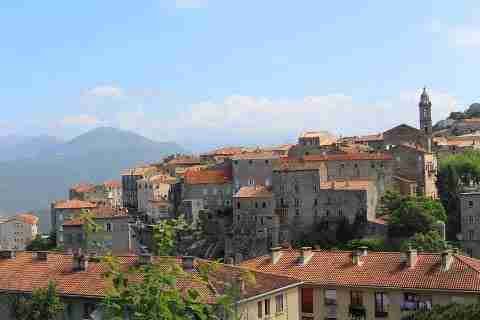
The Stone Streets and Church of Sainte Marie
At the center of Sartène, the Place de la Liberation (also known as Place Porta) is a spacious square framed by stone buildings that exude an air of timelessness. From here, wander through the maze of narrow, cobbled streets, which seem to echo with the stories of the generations that have walked them. Your curiosity might soon be captured by the Church of Sainte Marie, an imposing granite building with a bell tower that stands sentinel over the town. Inside, the church is a cool, tranquil space, with stunning stained-glass windows and an atmosphere conducive to quiet reflection.
A Corsican Lunch in Sartène
Lunchtime in Sartène is not to be rushed. Picture yourself in a small, family-run eatery or a sun-drenched outdoor terrace, where the scents of herbs and slow-cooked meals fill the air. Corsican meals are often hearty and full of flavors, reflecting the island’s pastoral and maritime bounty. You might start with a plate of charcuterie, featuring an array of hams, sausages, and coppa. For a main course, perhaps a traditional stufatu, a rich and savory beef and red wine stew, accompanied by local cheese and freshly baked bread. And for those with a sweet tooth, the chestnut, an iconic Corsican product, features prominently in desserts, such as fiadone, a type of light, airy cheesecake made with brocciu, lemon zest, and a hint of alcohol, often served chilled.
In Sartène, you are invited not merely to observe but to immerse, to savor the depth of Corsican culture through its stone, its stories, and its extraordinary cuisine. Here, amid the timeless streets, you can touch the soul of Corsica.

